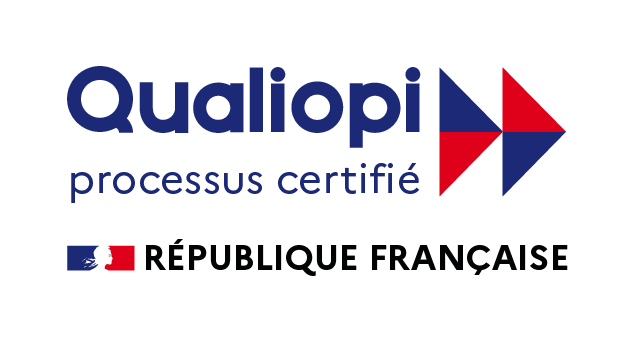
Maîtrisez l'anglais, maîtrisez votre carrière !
L’anglais, vecteur de votre succès professionnel.
Chez CapEnglish, nous comprenons l’importance cruciale de l’anglais dans le monde professionnel moderne. Notre offre de formation professionnelle est conçue pour répondre aux besoins spécifiques des entreprises, salariés, et professionnels indépendants souhaitant perfectionner leurs compétences en anglais. CapEnglish offre des formations sur mesure, axées sur des objectifs précis : préparation à une conférence, amélioration de la communication en milieu de travail, etc. Nos formations sont éligibles au CPF, garantissant une évolution tangible de vos compétences.


91% de nos clients satisfaits en 2024 !





Le TOEIC, la carte maitresse
Nous proposons des formations spécialisées pour la préparation au TOEIC, un atout indéniable pour tous les professionnels souhaitant évoluer dans un environnement international.
Nos programmes sont conçus pour optimiser vos résultats, garantissant ainsi une amélioration significative de votre compétence en anglais professionnel. En choisissant CapEnglish pour votre préparation au TOEIC, vous bénéficiez non seulement d’un enseignement de haute qualité dispensé par des formateurs expérimentés, mais également d’une opportunité unique de valoriser votre profil dans le marché du travail.
La certification TOEIC® a pour objectif d'évaluer objectivement le niveau d'anglais d'un candidat non natif, et ce dans un contexte d’activités professionnelle. Il valide 4 compétences principales :
1. Écouter et comprendre
plusieurs affirmations, questions, conversations courtes et allocutions en anglais, afin de comprendre et sélectionner les informations importantes pour être en capacité de répondre à des questions évaluant la compréhension de l’anglais nécessaire à une activité professionnelle.
2. Lire, analyser et comprendre
plusieurs documents rédigés en anglais. Y sélectionner les informations essentielles pour répondre à des questions évaluant la compréhension de l’anglais nécessaire au travail.
3. Ecrire des documents en anglais
en utilisant la grammaire et le vocabulaire approprié. Ceci permet d’évaluer les compétences écrites pour transmettre des informations, poser des questions, et donner des instructions dans un travail de rédaction professionnelle.
4. Communiquer en anglais
pour évaluer les compétences à mener des échanges et interagir dans un contexte professionnel.
Des formations certifiés
Certification QUALIOPI
CapEnglish est fier d’être certifié Qualiopi, un label d’efficacité qui atteste de la qualité de nos processus de formation professionnelle continue. Cette certification indépendante prouve notre engagement à respecter des standards rigoureux et à fournir une formation de haut niveau. Depuis le 1er janvier 2022, la certification qualité est obligatoire pour tous les prestataires d'actions concourant au développement des compétences souhaitant accéder aux financements publics et mutualisés. La marque QUALIOPI s'adresse donc à l'ensemble des prestataires, y compris les formateurs indépendants, proposant des actions de :
• Formation
• Bilan de compétences
• Validation des acquis de l'expérience (VAE)
• Formation par apprentissage
Utilisation de votre CPF
Toutes nos formations en anglais sont éligibles au Compte Personnel de Formation (CPF, anciennement DIF), un dispositif qui permet de faire financer votre formation par votre entreprise, jusqu’à 24 heures de formation par an.
Que vous soyez un salarié en quête de formation, ou un Responsable des Ressources Humaines désireux de former votre personnel, CapEnglish vous accompagne dans l’utilisation de votre CPF pour une formation en anglais. Procédure de demandes et organisation vous sont facilitées.
Vous souhaitez progresser dans votre carrière en suivant une formation ? Sachez que dès votre entrée sur le marché du travail et jusqu’à votre départ à la retraite, vous bénéficiez d’un compte personnel de formation (CPF). Ce compte, qui a remplacé le droit individuel à la formation (DIF), peut être utilisé tout au long de votre vie active, y compris pendant les périodes de chômage, pour suivre une formation qualifiante ou certifiante.
Lorsque vous travaillez à temps plein, ou au moins à mi-temps, l’alimentation de votre compte est faite à hauteur de 500 € par année de travail, avec un maximum fixé à 5 000 €.



Thématiques spécialisées:

Notre curriculum couvre une gamme étendue de domaines professionnels, incluant la finance, le marketing, la santé, la technologie, et bien plus. Préparez-vous à des voyages d’affaires, travaillez à l’étranger, et optimisez vos relations internationales avec CapEnglish. Notre approche vous garantit une progression rapide et tangible, quel que soit votre niveau initial.
- Finance economy
- Health professionals
- Commerce and marketing
- Public service
- Technology and new media
- Tourisme
Individualisation du programme, formation en visio, accompagnement …
Soyez prêts à embrasser toutes les opportunités avec assurance et compétence !

Notre offre de formation professionnelle est conçue pour répondre aux besoins spécifiques des entreprises, salariés, et professionnels indépendants souhaitant perfectionner leurs compétences en anglais. CapEnglish offre des formations sur mesure, axées sur des objectifs précis : préparation à une conférence, amélioration de la communication en milieu de travail, etc. Nos formations sont éligibles au CPF, garantissant une évolution tangible de vos compétences.


Nos valeurs, le socle de notre identité
Tout a commencé en 2009, lorsque trois amis de l’ESC Amiens, Alexandre FORLINI, Alexandre GRUNENWALD, et Benjamin BOISSY D’ANGLAS, ont eu une révélation.
Après une année de césure, ils partagent une prise de conscience commune : “En quatrième année, nous avons eu l’occasion de partir à l’étranger.
Une fois rentrés, nous avons tous constaté que, malgré nos études, notre maîtrise de l’anglais était insuffisante,” confie le trio. Ils décident alors de répondre à ce manque flagrant par une solution innovante.


